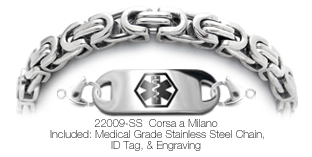Kidney Disease Bracelets can help prevent injury when every second counts
How to say more, faster:
AV FISTULA
R-ARM: NO BP/IV
Example engraving:
CKF–STAGE 3
HBP, ON ARBs
See more ID Abbreviations
Special Warning for Dialysis Patients
Patients undergoing kidney dialysis must warn EMT's and ER doctors/nurses to not use blood pressure cuffs and needles on the arm with an AV Fistula. Starting an IV and the pressure from a blood pressure cuff can cause injury to the affected arm. Your ID tag should say "L-ARM: NO BP/IV" at a minimum.
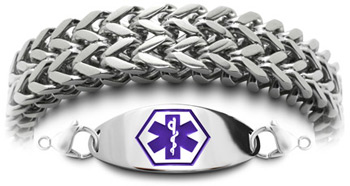
Don't forget other medical issues such as heart problems, diabetes and critical meds. Doctors need a full picture to avoid drug interactions and to give proper aid.
Need more help: See The American Association of Kidney Patients
Why stainless steel is often better for kidney patients
Not limited to transplants as some kidney patients may also be taking chemo meds for certain kidney problems.
Acidic skin, caused naturally in some people, can also tarnish and etch pewter, precious metals and many more.
See other design solutions at Medical ID Fashions
A kidney is hard to get. Protecting it can be easy.
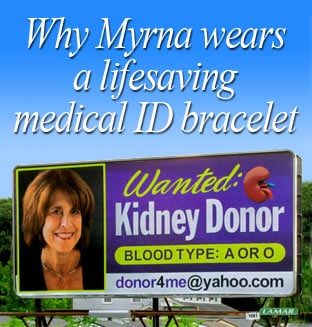
Our customer protects her precious kidney 24/7
Myrna Bernstein put her kidney condition up for display: right next to Central Ave in Albany, New York. Her story will inspire you to pursue every possible avenue to get the treatment you need and protect yourself with a medical bracelet. Read more here.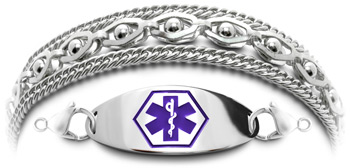
The world's largest selection of custom sized Kidney disease bracelets
Classifications of Chronic Kidney Disease
Fluid retention. Without the kidneys to properly rid of waste in the blood, the toxins back up and cause swelling in the extremities. This could direct fluid into your lungs or the cardiac sac (pericardium) resulting in obstructions of the airways and blood flow to the heart which can be deadly if not treated promptly.
Hyperkalemia. Put simply, hyperkalemia is having too much potassium in the bloodstream. This is more common in CKD patients than what is considered normal because of the problems with filtration of the blood. If this comes on suddenly, the spike in potassium can impair the heart’s ability to function.
Cardiac episode. It's common for people that have CKD to also have high blood pressure, hold excess weight, and/or have damaged blood vessels. Each of these factors combined puts one at a higher risk for a cardiac episode such as a stroke, heart failure, or a heart attack. (Mayo Clinic Staff, 2015)
Why Kidney Disease bracelets are critical in emergencies
Kidney disease is a concern to paramedics and doctors. That's why when you're unconscious, they need to know about your specific conditions to give you the right treatment. After all, every second counts.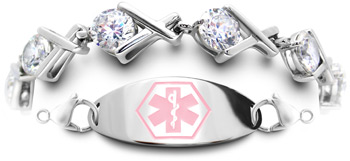
Chronic kidney disease and its impact on your body
Chronic kidney disease (CKD), or chronic kidney failure, is the end result of a gradual loss of kidney function usually having spanned several years or decades. Symptoms do not usually manifest until the later stages of the disease—often at the point where the kidneys are damaged beyond repair.
Healthy kidney function makes possible the filtration of wastes and excess fluids from the bloodstream. When kidney function is compromised, these toxins will begin to build up causing a host of problems such as:
(Mayo Clinic Staff, 2015)
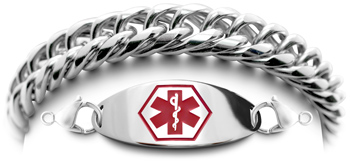
Symptoms of CKD often vary from person-to-person with no regular set of side-effects although, there are several factors that put one at an increased risk of developing CKD. It is important to make an appointment with your doctor if you are experiencing the aforementioned symptoms and if any of these factors apply to you:
Treatment for CKD focuses on alleviating symptoms (e.g. diuretics for swelling), controlling conditions that compound kidney failure (e.g. ACE inhibitors for HTN), and/or hopefully replacing the damaged organ(s) through transplant or dialysis. The course of action taken is completely dependent on both what stage of progression CKD is in, as well as the desires of the individual. Unfortunately, there currently is no cure for CKD no matter what stage they are experiencing, and unless a transplant occurs it is likely that the disease will result in death especially if not properly monitored by a physician.
References:

